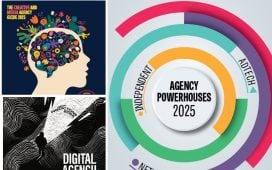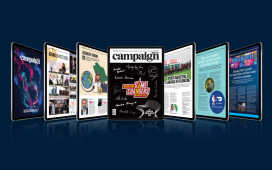By Hiba Hassan, head of design and visual communications department, SAE Creative Media Institute
Imagine putting on a headset and opening your eyes to a virtual world, and with the tap of your finger you get to teleport into an automotive showroom. Next, you look at a blank platform in front of you and again tap your fingers. A tablet-like screen appears in front of your eyes, allowing you to select the car you want to see. Browsing the menu and the customisations it offers, you choose the colour of your vehicle, the interior, rims, or any feature available. When happy with the customisations, you walk to your new virtual car, open the door, go inside to test drive it virtually, and even take your family on a tour of Europe. When you are satisfied with the choice, add it to your cart, pay, and the car will arrive at your doorstep. This experience we might imagine seeing in futuristic sci-fi movies is much closer than we think.
It’s here! Marcomms360 – Predictions 2023 is Campaign Middle East’s flagship annual event and a must-attend for anyone who wants to be prepared for the year ahead. The full-morning conference takes place on December 8 in Dubai. Book your tickets now before they sell out.
Extended reality (XR) is a term that represents all virtual experiences. Extended reality includes augmented reality, or AR, which uses the physical world to trigger overlapping digitally generated information, while mixed reality (MR) adds interactivity to the virtual content. Finally, virtual reality (VR) aims to create an entirely virtual environment that simulates the real world.
Computer scientist Ivan Sutherland developed the first attempt at virtuality technologies in 1968 with a system called Sword of Damocles. In its early years, between 1970 and 1990, virtual reality and augmented reality gained traction in the medical, military and aerospace sectors, and later academia. Recently, wearable and virtual computing systems have seen field-changing advancements and broader adoption, opening doors to vast opportunities in many fields, including e-commerce.
Regardless of the significant advances, the XR technology is not yet ready to execute an entirely virtual shopping experience like the example above. However, AR and MR are already revolutionising e-commerce by enhancing the shopper experience. At the end of an Apple website product page is an icon that prompts users to view the latest iPhone or laptop in augmented reality. Clicking the icon allows the user to project a virtual version of the product on a flat surface. Users can also scale, rotate and move the product to get a feel of it before buying it. Many brands are adopting this kind of AR use. L’Oréal has jumped on this surge with the Virtual Makeup try-on technology available on the Maybelline website. Shoppers can try any Maybelline Makeup product using their phones and share it with friends on social media to get their opinions. The latest version of Ikea’s MR experience, ‘Ikea Kreativ,’ enables users to delete existing furniture and replace it with store items. Technologies behind these elevated shopping experiences are growing, combining advanced machine learning algorithms and evolving hardware like the lidar sensors on iPhones.
Snapchat’s AR shopping lens is one of the early adopters of the technology. Snapchat already provides a virtual shopping experience platform to well-known brands such as Nike and is accessible to any brand wanting to advertise on the forum. While AR MENA brand experiences are not very popular yet on the platform, it is picking up pace with Snapchat’s announcement it will launch a Creator Studio in Riyadh, in Saudi Arabia.
While VR isn’t as accessible as AR, it is hard to ignore the opportunities it creates for brands, from unique immersive experiences to virtual goods. For example, the Nikeland virtual store on the metaverse game platform Roblox allows users to browse and try on virtual products. Since its launch in November last year, Nike has reported 6.7 million visitors from 224 countries to Nikeland.
Other big tech companies such as Pinterest, Instagram, Google and Amazon are also advocating the growth of virtual shopper experiences with try-on makeup, jewellery, apparel (clothes, shoes) and accessories (hats and eyewear). Also, with Disney and UFC announcing their adoption of VR technologies and the metaverse, the opportunities for XR are surging.
A study conducted in 2021 By Deloitte Digital and Snapchat projected that 4.3 billion users would be regular users of AR technologies by 2025, which, according to Snapchat, will be 75 per cent of the world population and almost every mobile phone user. Also, according to Zawya and Ciena’s study conducted in June, 94 per cent of professionals in the MENA region are comfortable with conducting meetings in VR.
Following the announcement of his Highness Sheikh Hamdan bin Mohammed bin Rashid Al Maktoum, Crown Prince of Dubai and Chairman of The Executive Council of Dubai, of his goal to turn Dubai into one of the world’s top 10 metaverse economies, the growth for XR in the region is at its prime. With advancing technologies, mass adoption and access to AR, MR, and VR are picking up speed. To remain relevant and connected to their consumers, brands need to adopt ER strategies and be open to artificial intelligence, blockchain, and web 3.0 technology to ride this rising wave.










